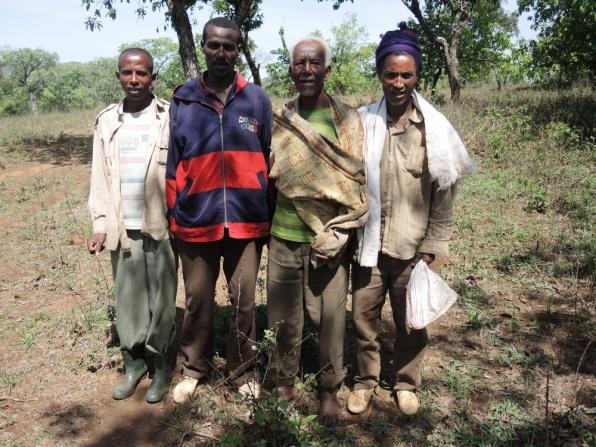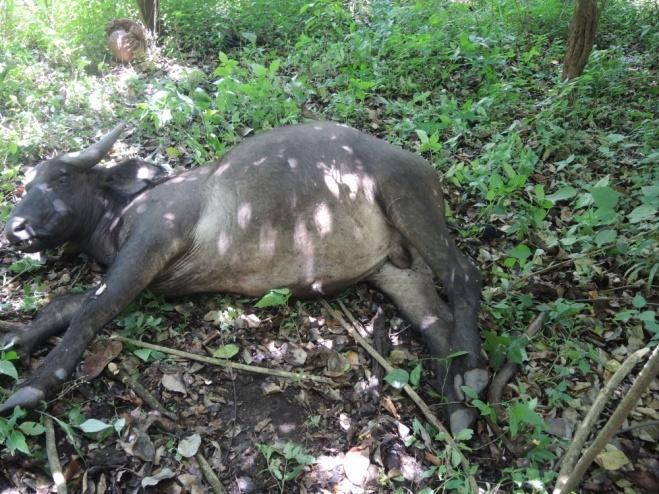Habte Jebessa Debella
The objective of this project is to increase public awareness and designate the Didessa River Valley as a national park.

LRPs in the Didessa River Valley. Two of these LRPs were former poachers.
The target area of this project is the Didessa River Valley, Western Oromia Region in the Federal Democratic Republic of Ethiopia. The Didessa River Valley is a bounty of wildlife and haven of several species of ungulates. However, it is neglected and forgotten for centuries. Their ecosystem shrunk, and the killing soared. The local people hardly understand the value of these animals in their lives except their meat or hides. They see them as their enemies. The concept of ecotourism and benefit sharing is not there. One should break the silence of killing and wildlife extinction. Increasing public awareness of the local community in and around the Didessa River Valley about the unique species in the valley, their ecological and economic benefits which has tremendous contributions towards ecosystem conservation.

Unidentified buffalo killed by poachers in the Didessa River valley on April 19, 2014 while this researcher was in the same vicinity in the forest.
Firstly, the Didessa River is one of the main tributaries of the Blue Nile. In general, conservation of the vegetation of the Didessa Valley contributes to the conservation of the Blue Nile water, apart from wildlife conservation. If left to itself, the valley will be soon inhabited by settlement and without vegetation;
Secondary, by its very nature the Sudan-Guinea savannah is known to host numerous species of mammals, birds, reptiles, and amphibians. Conservation of the Didessa Valley means conservation of all the species of the above taxa;
Thirdly, the rediscovery of the forest buffalo in Ethiopia demarcates the farthest territory of the species in North Eastern Africa, and a record of one new species of mammal for Ethiopia. This is significant for the country in terms of touristic attraction and species protection;
Fourth, the relatively large but dwindling number of different species of buffaloes in the valley and several species of warthogs; wild pigs; antelopes and primates will be protected;
Fifth, the area will be designated as a national park;
Sixth, lifestyle of the surrounding population will rise as a result of ecotourism if the park is established. The method follows conservation methodologies that are successful in some Asian countries.
Please see: ANSAB. (2010). Development and Mobilization of Local Resource Persons (LRPs). Asia Network for Sustainable Agriculture and Bioresources. Kathmandu, Nepal. Through the development of Local Resource Persons ANSAB in Nepal has developed a practical combination of environmental, social and economic interventions that conserve biodiversity, create jobs and provide income for the rural poor.
This author believes that this method can be applied to biodiversity conservation in Ethiopia.